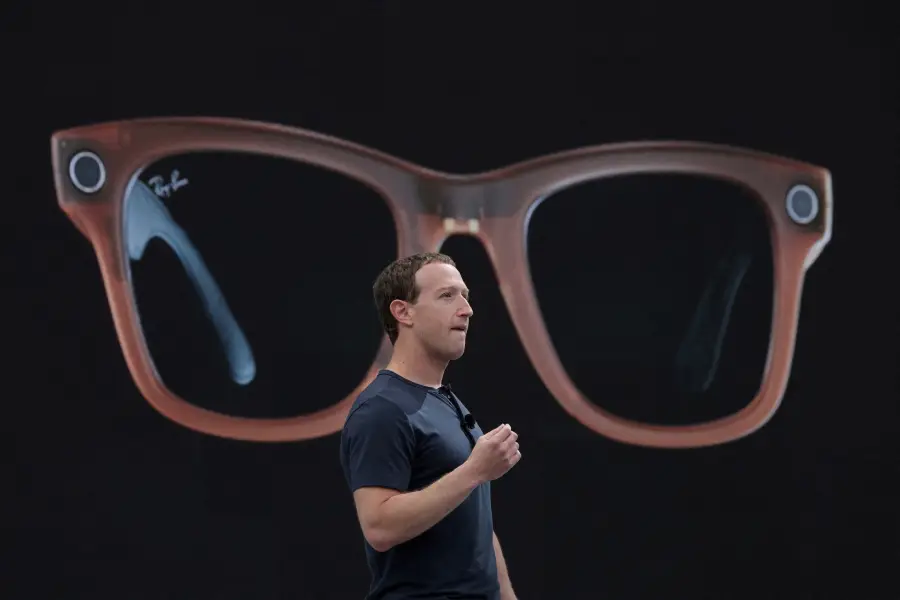Meta Ray-Ban: The Future of Smart Glasses
When you hear Meta Ray-Ban, you think of Ray-Ban’s timeless style fused with Meta’s push into wearable technology. Together, they’ve created something bold: smart glasses that are as much a fashion statement as they are a tech innovation.
These glasses are not just about looking good. Meta Ray-Ban blends lifestyle with digital convenience, giving us a glimpse of what the future of augmented reality and wearable computing might look like.
In this blog, we’ll explore what makes Meta Ray-Ban smart glasses unique, their advantages and disadvantages, how they stack up against rivals, and what the future could hold.
What Are Meta Ray-Ban Smart Glasses?
The Meta Ray-Ban smart glasses are the result of a partnership between Meta and Ray-Ban. They look like classic sunglasses but come with built-in technology, including:
- Cameras for photos and videos
- Voice assistant integration
- Open-ear audio for music and calls
- Touch and voice controls
- Easy content sharing to social platforms
Unlike bulky AR headsets, Meta Ray-Ban glasses blend into everyday life. You can wear them at a café, on a walk, or while traveling, without standing out as “the person with tech on their face.”
Why Meta Ray-Ban Matters
Smart glasses aren’t new. Google Glass tried to break through a decade ago but failed. Meta’s attempt feels different, and here’s why:
- Style First: With Ray-Ban’s credibility, these glasses don’t scream “tech gadget.”
- Better Tech: Cameras, microphones, and processors are now small and efficient.
- Cultural Shift: We already accept wearables like AirPods and smartwatches—glasses are the natural next step.
When someone wears Meta Ray-Ban, they’re not “wearing a device.” They’re wearing stylish Ray-Bans, just with smarter functionality.
Advantages of Meta Ray-Ban
1. Fashion Meets Function
Unlike many wearables, Meta Ray-Ban doesn’t look like tech gear. They’re stylish, subtle, and wearable anywhere.
2. Hands-Free Content Creation
Creators can record or snap photos with a first-person view—perfect for biking, cooking, or traveling without holding a phone.
3. Built-In Audio
The open-ear speakers let you listen to music or take calls while staying aware of your surroundings.
4. Seamless Social Sharing
Integration with Meta platforms like Instagram and Facebook makes posting content effortless.
5. Natural Interaction
Voice commands like “Hey Meta, take a photo” make the experience smooth and intuitive.
More from Blogs: Super Mario Galaxy Movie
Disadvantages of Meta Ray-Ban
1. Privacy Concerns
The built-in cameras make some people uneasy, fearing they might be recorded without consent.
2. Limited AR Capabilities
Despite Meta’s AR vision, current Meta Ray-Ban models lack holograms or immersive visuals.
3. Short Battery Life
With audio, video, and connectivity, battery drains quickly—around 4–6 hours of moderate use.
4. Higher Price
They cost significantly more than standard Ray-Bans, which may not appeal to everyone.
5. Dependence on Meta Ecosystem
The glasses are tightly integrated with Meta’s apps, raising concerns for those wary of Meta’s data practices.
Meta Glasses vs Other Smart Glasses
The competition in smart eyewear is heating up:
- Apple (rumored AR glasses): Likely more powerful, but much more expensive.
- Snap Spectacles: Fun and creator-focused, but not as fashionable.
- Google Glass (enterprise): Geared for professional use, not lifestyle.
Meta’s biggest advantage is style and lifestyle integration. With Meta Glasses, you don’t feel like you’re wearing a gadget—you just look sharp.

The Future of Meta Ray-Ban
AR Integration
Future versions may overlay directions, translations, or notifications right in your field of vision.
Everyday Utility
Meta Glasses could reduce phone dependency by putting calls, messages, and reminders directly in your glasses.
Professional Applications
From surgery to education, smart glasses could enhance precision and teaching in real-world environments.
Social Impact
These glasses could change how we record memories—hands-free and in the moment—but they also raise concerns about constant surveillance.
Advantages vs Disadvantages: The Balance
Advantages
- Stylish, wearable design
- Hands-free content capture
- Smooth Meta platform integration
- Built-in open-ear audio
- Everyday usability
Disadvantages
- Privacy concerns
- Limited AR features (for now)
- Short battery life
- High cost
- Strong reliance on Meta’s ecosystem
Is Meta Glasses the Future of Wearables?
Here’s the thing: Meta Ray-Ban smart glasses aren’t the fully immersive AR devices we see in sci-fi. But they are a huge step forward.
They’re stylish, functional, and practical enough to hint at what’s coming next. Just as smartphones changed how we connect, Meta Ray-Ban could reshape how we capture, communicate, and share.
Will they replace phones? Probably not yet. But will they change how we interact with tech in everyday life? Absolutely.
Views on Meta Ray-Ban
The Meta Ray-Ban smart glasses bring together fashion and function like no wearable before. They’re practical, stylish, and exciting—but they also face tough challenges around privacy, AR limitations, and battery life.
If you’re curious about the future of technology, Meta Ray-Ban offers a stylish glimpse into what’s next. With continued innovation, they might become as essential as the smartphone did a decade ago.
FAQs on Meta Ray-Ban
Q1. What can Meta Ray-Ban smart glasses do?
They let you capture photos and videos, make calls, listen to music, and share content directly to social platforms.
Q2. Do Meta Ray-Ban glasses support AR?
Not yet. Current models focus on cameras, audio, and sharing. Future models are expected to add AR.
Q3. How long does the battery last?
Around 4–6 hours depending on usage.
Q4. Are Meta Ray-Ban glasses safe for privacy?
They include a small light indicator when recording, but privacy concerns remain.
Q5. How much do they cost?
They cost more than traditional Ray-Bans, with pricing depending on model and frame style.
